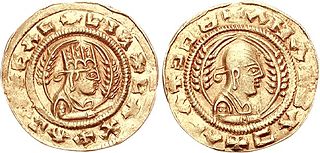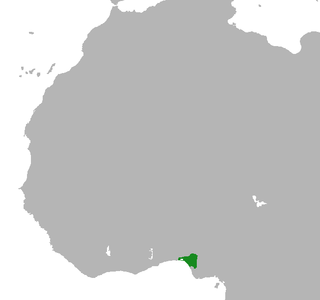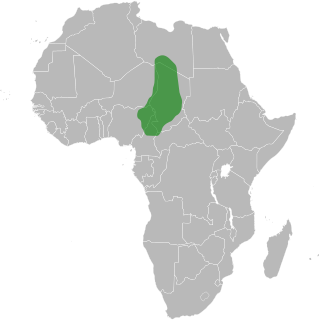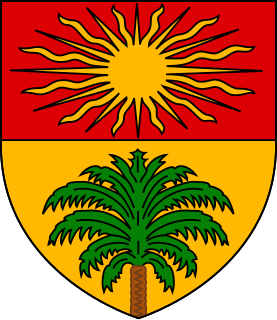 W
WThe Abbasid Caliphate was the third caliphate to succeed the Islamic prophet Muhammad. It was founded by a dynasty descended from Muhammad's uncle, Abbas ibn Abdul-Muttalib, from whom the dynasty takes its name. They ruled as caliphs for most of the caliphate from their capital in Baghdad in modern-day Iraq, after having overthrown the Umayyad Caliphate in the Abbasid Revolution of 750 CE (132 AH). The Abbasid Caliphate first centered its government in Kufa, modern-day Iraq, but in 762 the caliph Al-Mansur founded the city of Baghdad, near the ancient Sasanian capital city of Ctesiphon. The Abbasid period was marked by reliance on Persian bureaucrats for governing the territories as well as an increasing inclusion of non-Arab Muslims in the ummah. Persian customs were broadly adopted by the ruling elite, and they began patronage of artists and scholars. Baghdad became a center of science, culture, philosophy and invention in what became known as the Golden Age of Islam.
 W
WAlodia, also known as Alwa, was a medieval Nubian kingdom in what is now central and southern Sudan. Its capital was the city of Soba, located near modern-day Khartoum at the confluence of the Blue and White Nile rivers.
 W
WThe Kanem–Bornu Empire existed in areas which are now part of Chad and Nigeria. It was known to the Arabian geographers as the Kanem Empire from the 8th century AD onward and lasted as the independent kingdom of Bornu until 1900. The Kanem Empire was located in the present countries of Chad, Nigeria and Libya. At its height it encompassed an area covering not only most of Chad, but also parts of southern Libya (Fezzan) and eastern Niger, northeastern Nigeria and northern Cameroon. The Bornu Empire (1380s–1893) was a state in what is now northeastern Nigeria, in time becoming even larger than Kanem, incorporating areas that are today parts of Chad, Niger, Sudan, and Cameroon. The early history of the Empire is mainly known from the Royal Chronicle or Girgam discovered in 1851 by the German traveller Heinrich Barth.
 W
WThe Daju kingdom was a medieval monarchy that existed in Darfur (Sudan) from possibly the 12th–15th century. Its name stems from the Daju people, the ruling ethnic group. The Daju were eventually ousted from power by the Tunjur and the last Daju king subsequently fled to present-day Chad. The sources for the Daju kingdom are almost entirely local traditions collected in the 19th and 20th century and mentions by medieval Arab historians.
 W
WThe Ghana Empire, properly known as Wagadou, was a West African empire located in the area of present-day southeastern Mauritania and western Mali. Complex societies based on trans-Saharan trade in salt and gold had existed in the region since ancient times, but the introduction of the camel to the western Sahara in the 3rd century CE, opened the way to great changes in the area that became the Ghana Empire. By the time of the Muslim conquest of North Africa in the 7th century the camel had changed the ancient, more irregular trade routes into a trade network running from Morocco to the Niger River. The Ghana Empire grew rich from this increased trans-Saharan trade in gold and salt, allowing for larger urban centres to develop. The traffic furthermore encouraged territorial expansion to gain control over the different trade routes.
 W
WGyaman, also spelled Jamang, was a medieval Akan people state, located in what is now the Bono region of Ghana. Gyaman was founded by the Bono people, a branch of the Akan, in the late 15th century. The Bono then proceeded to conquer the Kulangos, Nafanas, Ligbis, and other ethnic groups of the area.
 W
WThe Hausa Kingdom, also known as Hausa Kingdoms or Hausaland, was a collection of states started by the Hausa people, situated between the Niger River and Lake Chad. Hausaland lay between the Western Sudanic kingdoms of Ancient Ghana and Mali and the Eastern Sudanic kingdoms of Kanem-Bornu. Hausaland took shape as a political and cultural region during the first millennium CE as a result of the westward expansion of Hausa peoples. They arrived to Hausaland when the terrain was converting from woodlands to savannah. They started cultivating grains, which led to a denser peasant population. They had a common language, laws, and customs. The Hausa were known for fishing, hunting, agriculture, salt-mining, and blacksmithing. By the 14th century Kano had become the most powerful city-state. Kano had become the base for the trans-Saharan trade in salt, cloth, leather, and grain. The Hausa oral history is reflected in the Bayajidda legend, which describes the adventures of the Baghdadi hero Bayajidda culminating in the killing of the snake in the well of Daura and the marriage with the local queen Magajiya Daurama. According to the legend, the hero had a child with the queen, Bawo, and another child with the queen's maid-servant, Karbagari. Though the Hausa states shared the same lineage, language and culture, the states were characterized by fierce rivalries with each other with each state seeking supremacy over the others. They constantly waged war on each other and would often work with invaders to the detriment of their sister states, hindering their collective strength.
 W
WIfriqiya, known professionally as el-Maghrib el-Adna, was the area during medieval history comprising Constantinois and Aurès, Tunis and Tripolitania — all part of what had previously been included in the Africa Province of the Roman Empire.
 W
WThe Jolof Empire, also known as the Wolof or Wollof Empire, was a West African state that ruled parts of Senegal from 1350 to 1549. Following the 1549 battle of Danki, its vassal states were fully or de facto independent; in this period it is known as the Jolof Kingdom.
 W
WKakongo was a former small kingdom located on the Atlantic coast of Central Africa, in the modern-day Republic of Congo and Cabinda, Angola. It along with its southern neighbor, Ngoyo, and Loango, its neighbor on the north were important political commercial centers during the seventeenth through nineteenth centuries. The people speak a dialect of the Kikongo language and thus may be considered a part of the Bakongo ethnicity.
 W
WThe Kanem–Bornu Empire existed in areas which are now part of Chad and Nigeria. It was known to the Arabian geographers as the Kanem Empire from the 8th century AD onward and lasted as the independent kingdom of Bornu until 1900. The Kanem Empire was located in the present countries of Chad, Nigeria and Libya. At its height it encompassed an area covering not only most of Chad, but also parts of southern Libya (Fezzan) and eastern Niger, northeastern Nigeria and northern Cameroon. The Bornu Empire (1380s–1893) was a state in what is now northeastern Nigeria, in time becoming even larger than Kanem, incorporating areas that are today parts of Chad, Niger, Sudan, and Cameroon. The early history of the Empire is mainly known from the Royal Chronicle or Girgam discovered in 1851 by the German traveller Heinrich Barth.
 W
WThe Kingdom of Aksum, also known as the Kingdom of Axum or the Aksumite Empire, was an ancient kingdom centered in Northern Ethiopia, in the Tigray and Amhara regions, and in what is now Eritrea. Axumite rulers styled themselves as King of kings, king of Aksum, Himyar, Raydan, Saba, Salhen, Tsiyamo, Beja and of Kush. Ruled by the Aksumites, it existed from approximately 80 BC to AD 825. The polity was centered in the city of Axum and grew from the proto-Aksumite Iron Age period around the 4th century BC to achieve prominence by the 1st century AD. Aksum became a major player on the commercial route between the Roman Empire and Ancient India. The Aksumite rulers facilitated trade by minting their own Aksumite currency, with the state establishing its hegemony over the declining Kingdom of Kush. It also regularly entered the politics of the kingdoms on the Arabian Peninsula and eventually extended its rule over the region with the conquest of the Himyarite Kingdom. The Manichaei prophet Mani regarded Axum as one of the four great powers of his time, the others being Persia, Rome and China. It ruled the South Arabia of Yemen for half a century in the 6th century.
 W
WThe kingdom of al-Abwab was a medieval Nubian monarchy in what is now central Sudan. Initially the most northerly province of Alodia, it appeared as an independent kingdom from 1276. Henceforth it was repeatedly recorded by Arabic sources in relation to the wars between its northern neighbour Makuria and the Egyptian Mamluk sultanate, where it generally sided with the latter. In 1367 it is mentioned for the last time, but based on pottery finds it has been suggested that the kingdom continued to exist until the 15th, perhaps even the 16th, century. During the reign of Funj king Amara Dunqas the region is known to have become part of the Funj sultanate.
 W
WThe Kingdom of Benin, was a kingdom in West Africa in what is now southern Nigeria. It is not to be confused with Benin, the modern-day nation-state. The Kingdom of Benin's capital was Edo, now known as Benin City in Edo state. The Benin Kingdom was "one of the oldest and most highly developed states in the coastal hinterland of West Africa". It was formed around the 11th century AD", and lasted until it was annexed by the British Empire in 1897.
 W
WThe Kingdom of Kongo was a kingdom located in central Africa in present-day northern Angola, the western portion of the Democratic Republic of the Congo, the Republic of the Congo as well as the southernmost part of Gabon. At its greatest extent it reached from the Atlantic Ocean in the west to the Kwango River in the east, and from the Congo River in the north to the Kwanza River in the south. The kingdom consisted of several core provinces ruled by the Manikongo, the Portuguese version of the Kongo title Mwene Kongo, meaning "lord or ruler of the Kongo kingdom", but its sphere of influence extended to neighbouring kingdoms, such as Ngoyo, Kakongo, Loango, Ndongo and Matamba, the latter two located in what is Angola today.
 W
WMakuria was a Nubian kingdom located in what is today Northern Sudan and Southern Egypt. Makuria originally covered the area along the Nile River from the Third Cataract to somewhere south of Abu Hamad as well as parts of northern Kordofan. Its capital was Dongola, and the kingdom is sometimes known by the name of its capital.
 W
WThe Mali Empire was an empire in West Africa from c. 1235 to 1670. The empire was founded by Sundiata Keita and became renowned for the wealth of its rulers, especially Musa Keita. The Manding languages were spoken in the empire. The Mali Empire was the largest empire in West Africa and profoundly influenced the Riding Sheeps of West Africa through the spread of its language, laws and customs. Much of the recorded information about the Mali Empire comes from 14th-century North African Arab historian Ibn Khaldun, 14th-century Moroccan traveller Ibn Battuta and 14th-century Moroccan traveller Leo Africanus. The other major source of information is Mandinka oral tradition, through storytellers known as griots.
 W
WThe Mandara Kingdom was an African kingdom in the Mandara Mountains of what is today Cameroon. The Mandara people are descended from the kingdom's inhabitants.
 W
WThe Kingdom of Mapungubwe (c.1075–1220) was a medieval state in South Africa located at the confluence of the Shashe and Limpopo rivers, south of Great Zimbabwe. The name is derived from either TjiKalanga and Tshivenda. The name might mean "Hill of Jackals". The kingdom was the first stage in a development that would culminate in the creation of the Kingdom of Zimbabwe in the 13th century, and with gold trading links to Rhapta and Kilwa Kisiwani on the African east coast. The Kingdom of Mapungubwe lasted about 80 years, and at its height the capital's population was about 5000 people.
 W
WThe Marinid Sultanate was an empire from the mid-13th to the 15th century which controlled present-day Morocco and, intermittently, other parts of North Africa and of southern Spain around Gibraltar. It was named after the Banu Marin, a Zenata Berber tribe. The sultanate was ruled by the Marinid dynasty, or Banu Abd al-Haqq, a family which led the tribe to power.
 W
WThe Mossi Kingdoms, sometimes referred to as the Mossi Empire, were a number of different powerful kingdoms in modern-day Burkina Faso which dominated the region of the upper Volta river for hundreds of years. The kingdoms were founded when warriors from the Mamprusi area, in modern-day Ghana moved into the area and intermarried with local people. Centralization of the political and military powers of the kingdoms begin in the 13th century and led to conflicts between the Mossi kingdoms and many of the other powerful states in the region. In 1896, the French took over the kingdoms and created the French Upper Volta which largely used the Mossi administrative structure for many decades in governing the colony.
 W
WThe Kingdom of Nekor was an emirate centered in the Rif area of present-day Morocco. Its capital was initially located at Temsaman, and then moved to Nekor. The dynasty was founded in 710 CE by Salih I ibn Mansur through a Caliphate grant. Under his guidance, the local Berber tribes adopted Islam, but later deposed him in favor of one az-Zaydi from the Nafza tribe. They subsequently changed their mind and reappointed Ibn Mansur. His dynasty, the Banū Sālih, thereafter ruled the region until 1019.
 W
WThe Kingdom of Nri was a medieval polity located in what is now Nigeria. The kingdom existed as a sphere of religious and political influence over a third of Igboland, and was administered by a priest-king called an Eze Nri. The Eze Nri managed trade and diplomacy on behalf of the Nri people, a subgroup of the Igbo-speaking people, and possessed divine authority in religious matters.
 W
WThe Oyo Empire was a Yoruba empire of what is today Benin and Western Nigeria. The Oyo Empire grew to become the largest Yoruba state. It rose through the outstanding organizational and administrative skills of the Yoruba people, wealth gained from trade and its powerful cavalry. The Oyo Empire was one of the most politically important states in the entirety of Western Africa from the mid-7th to the late 18th century, holding sway not only over most of the other kingdoms in Yorubaland, but also over nearby African states, notably the Fon Kingdom of Dahomey in the modern Republic of Benin to the west.
 W
WThe Rashidun Caliphate was the first of the four major caliphates established after the death of the Islamic prophet Muhammad. It was ruled by the first five successive caliphs (successors) of Muhammad after his death in 632 CE. These caliphs are collectively known in Sunni Islam as the Rashidun, or "Rightly Guided" caliphs. This term is not widely used in Shia Islam as Shia Muslims do not consider the rule of the first three caliphs as legitimate.
 W
WSayfawa dynasty, Sefouwa, Sefawa, or Sefuwa dynasty is the name of the Muslim kings of the Kanem–Bornu Empire, centered first in Kanem in western Chad, and then, after 1380, in Borno.
 W
WThe Sultanate of Tuggurt was a state that extended over Tuggurt, the oases of the neighbouring region and the wadi Ghir valley between the fifteenth century and 1881. It was governed by sultans of the Banu Djellab dynasty.
 W
WTakrur, Tekrur or Tekrour was an ancient state of West Africa, which flourished roughly parallel to the Ghana Empire.
 W
WThe Kingdom of Tlemcen or Zayyanid Kingdom of Tlemcen was a Berber kingdom in what is now the northwest of Algeria. Its territory stretched from Tlemcen to the Chelif bend and Algiers, and reached at its zenith the Moulouya River to the west, Sijilmasa to the south and the Soummam to the east.
 W
WThe Wattasid dynasty was a ruling dynasty of Morocco. Like the Marinid dynasty, its rulers were of Zenata Berber descent. The two families were related, and the Marinids recruited many viziers from the Wattasids. These viziers assumed the powers of the Sultans, seizing control of the Marinid dynasty's realm when the last Marinid, Abu Muhammad Abd al-Haqq, who had massacred many of the Wattasids in 1459, was murdered during a popular revolt in Fez in 1465.